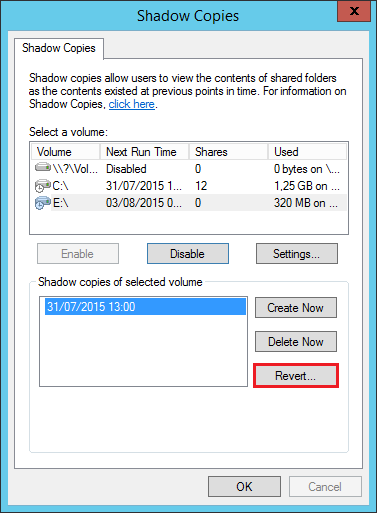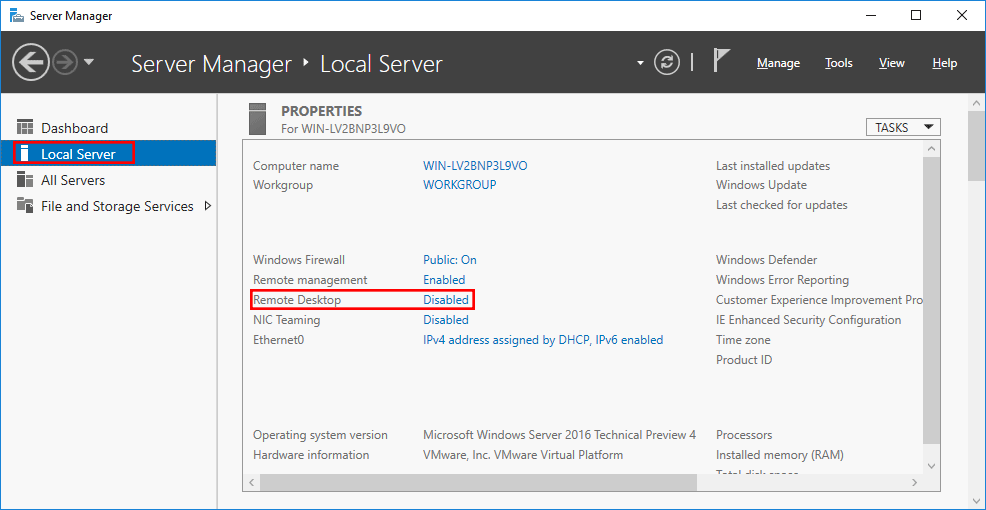To use VPN to remotely access server resources Press Ctrl + Alt + Delete on the client computer. Click Switch User on the logon screen. Click the network logon icon on the bottom right corner of the screen. Open the Server Manager console, navigate to the Local Server node, and click the Remote Desktop hyperlink as shown in Figure 2. The Remote Desktop hyperlink is simply a shortcut to the System. Jan 06, 2017 Recently I have seen a rise in the deployment of RDS, specifically Session Host, on Windows Server 2016 Essentials. While this seems like the perfect money saving combination, Essentials is about $200-300 cheaper than the Standard SKU, it is not. While not well documented, this configuration is not supported by Microsoft.
- Server 2016 Enable Remote Desktop
- Windows Server 2016 Essentials Enable Remote Desktop
- Windows Server 2016 Remote Desktop Services
- Windows Server 2016 Essentials Remote Desktop Login

The Windows Server 2016 Essentials management interface, known as the dashboard, has not changed since the 2012 version. From the dashboard, clients and users can manage the network centrally, even without IT skills (Figure 1). The server supports up to 25 user connections and 50 computers. If more are in use, companies need to switch to Windows Server 2016 Standard, which does not have a dashboard. However, the Essentials role, with a dashboard, is available in the Standard and Datacenter editions. If you install the Essentials role on a server running Windows Server 2016 Standard or Datacenter, you will not be limited to 25 users and 50 devices.
Compliant Licensing
Windows Server 2012 R2 introduced the option of installing the Essentials functions as a server service on the Datacenter and Standard editions. Client Access Licenses (CALs) are not necessary when using Windows Server 2016 Essentials. The server can have a maximum 64GB of memory. In such a scenario, multiple servers with Windows Server 2016 Essentials can be integrated into an existing Active Directory (e.g., for branches or small offices). A 2016 Essentials license costs around $500 (EUR500).
If you use Windows Server 2012 R2 Foundation, up to 15 users can be connected to the server – again, CALs are not necessary. Foundation is tied in directly with the hardware, because this edition is only available as an OEM version. However, it does not provide a dashboard. Windows Server 2016 does not have a Foundation edition. If you install the Essentials server role (Windows Server Essentials environment) in an existing Active Directory (AD), you can run the server as a member server. The user accounts of the domain in which you install the server are available in the dashboard. With Windows Server 2016, the restrictions are lifted if you integrate the role as a member server on your network.
Windows Server 2016 has numerous innovations in terms of storage and networking. These include the new Storage Spaces Direct, the Nano Server installation, and container technology. However, these innovations are not part of Windows Server 2016 Essentials, although Hyper-V is included in Essentials. You can easily run virtual machines (VMs) on a server with Essentials and virtualize the server itself. To use advanced Hyper-V functions such as shielded VMs, Storage Spaces Direct, and the new storage replication feature, you need the Datacenter edition of Windows Server 2016. A deduplication function for data has been improved in Windows Server 2016, but it is not available in Essentials.
Alternative: MultiPoint Role
Microsoft integrates the MultiPoint Services role into Windows server 2016. Simply put, this is a Remote Desktop Session Host, formerly Terminal Server, for small businesses or training centers that provides a way for users to connect a monitor, keyboard, and mouse directly to the server. The virtual desktops for MultiPoint Services are similar to those of the Remote Desktop Services. On request, the whole thing can also be operated as a VDI environment. MultiPoint can be used in small networks, also without the need for AD. In this case, you work with local user accounts on the server or with the user accounts in AD with 2016 Essentials. The user logs onto the server with these user accounts.
MultiPoint Services does not replace the Essentials role; instead, it is another way to connect users on small networks. If you operate several MultiPoint Servers on the network, they are integrated into the AD. In this case, you can log in with your domain account, which also applies for the operation of Essentials. You can use the Remote Desktop Protocol (RDP) to connect to the server, or you can directly connect the components to the server (e.g., via USB). Also, thin clients specially optimized for MultiPoint are known as multifunction USB hubs. The applications and the desktop that you work with are installed on the MultiPoint Server, as on a Remote Desktop Server.
Cloud Backup and Virus Protection
With Windows Server 2016 Essentials, small businesses can now back up server data in the cloud automatically and safely. Essentials allows the replication of the entire server to Azure. If the server fails, it can be provided as a VM in Azure. In this case, the clients are connected to Azure VM via a virtual network to Microsoft, which makes sense if companies want to set up high availability for Essentials.
By default, Microsoft integrates in-house virus protection through Windows Defender into Windows Server 2016, which is enabled by default in Essentials and can be configured locally, but not in the dashboard (Figure 2). As with the Standard and Datacenter editions, internal virus protection is disabled if you install an external virus scanner.
Server 2016 Enable Remote Desktop
You may have heard that Microsoft has removed the Essentials role from Server 2019 Standard/Datacenter but is still offering a Server 2019 Essentials SKU. But did you know that the Essentials SKU will not include the Essentials Experience role either?


Robert Pearman lays out the implications here:
Gone is the Remote Web Access feature.
Gone is the Essentials Connector.
Gone is Client PC Backup.
Gone is Office 365 Integration.
Gone, is the Dashboard.
Gone, indeed, is the Essentials Role.
All that remains of Essentials, is the name Essentials and the licensing limits of the Essentials SKU, of 25 client access licenses.
What we are presented with, is now more in line with Windows foundation server from several years ago.
One developer has figured out how to run the Essentials role from 2016 (which is basically a big .NET application) on Server 2019 Standard. Of course, that will never be supported by Microsoft. If you want a supported Essentials role, Server 2016 is the last option.
Essentials has been a great solution for small businesses that want an “all in one” on-premises server. Server 2016 with the Essentials role is still a viable option, as it is in mainstream support through 2022, and extended support through 2027. But if you want the latest-greatest Server 2019, you’ll need to find alternatives for the Essentials features.

Windows Server 2016 Essentials Enable Remote Desktop
Essentials Feature Alternatives
Remote Web Access is a web interface for remote file access and remote access to on-premises desktops. The latter is provided by an underlying server role called Remote Desktop Gateway. According to the Office Maven article, “Microsoft has removed all of the Remote Desktop Services roles from the [2019 Essentials] SKU,” but they are still available in 2019 Standard. So with 2019 Standard, you can still allow users remote access to their desktops; they just won’t have the convenient web dashboard showing accessible machines. (You could pre-create Remote Desktop links for them.) Also note that with 2019 Standard, you’ll need an RDS Client Access License (CAL) for each user or device. Not cheap.
Remote file access is not so easy. Yes, you should still be able to provide VPN access with native tools. Probably there are third-party tools that would provide a web interface for remote file access.
Client PC Backup Even if all of your critical data is stored on the server, you still need client PC images to restore in the case of a hard drive failure, upgrade failure, or virus infection. You could theoretically set up native Windows Backup or Veeam Free on each client to back up to a network share on the server, but that gets to be a lot to manage if there are very many machines. Veeam offers central management options, but they are not free. Some Network-Attached Storage (NAS) devices include client backup tools.
The Future of Small Business Computing
Windows Server 2016 Remote Desktop Services
“The cloud” has some valuable benefits for small business, particularly for hosting services that must be available 24x7x365 (email, web sites, critical file backup). However, many small companies still rely on line-of-business applications that require fast access to data that is best provided by a local server. The companies still have desktop computers that they use while in the office and to which they need remote access when out of the office.
Windows Server 2016 Essentials Remote Desktop Login
Essentials was a nice suite to meet several of these requirements, but there are alternatives. It’s up to I.T. providers to learn about the options and continue to advise customers on the best combination of solutions for their needs.
